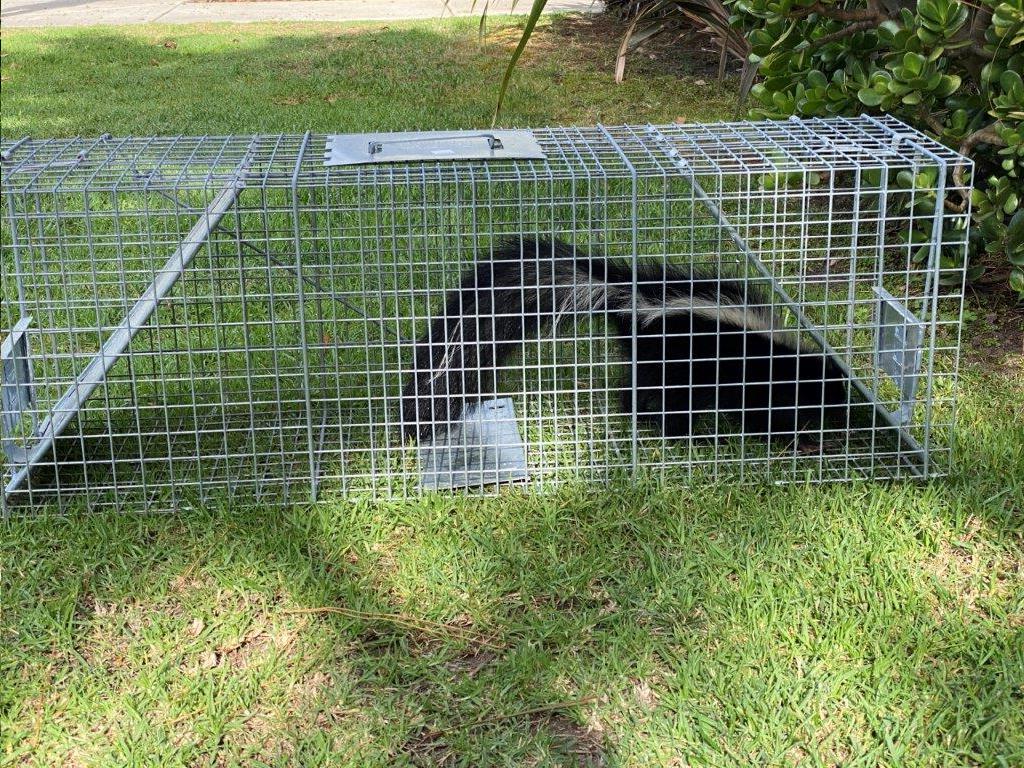
Nobody wants skunks around them or their properties. Although they are cute little animals, people are often weary of the bad scent popularly associated with them. However, there is a general misconception about skunks. Most people believe that once you sight a skunk then you are automatically going to get sprayed. This information is not true of course.
Contrary to popular opinion, skunks are peace loving animals. They go about their day without attacking anyone or anything unless it's food of course. They are also one of the many animals who fall on the small side in the animal kingdom. They therefore strive to avoid a fight as much as they can. But when the fight comes to them, they will have no choice but to defend themselves.
A skunk’s way of defending himself is to spray intruders with its foul smelling spray which is produced in its anal glands under its tail. The spray contains a mixture of compounds containing sulfur. These compounds, when combined with air, give an offensive smell capable of discouraging even the fiercest of predators.
There is a silver lining to all of this though. The fact is that skunks just don't decide to go on spraying sprees whenever they see a predator. Their spray, although potent, is not unlimited. A skunk can spray up to 8 times in a row but after that it has completely depleted its reserve and will have to wait a couple of days before the reserve can be filled again. During this time, it is possible that the skunk may run into trouble and since there is no defense, it may end up being injured or killed. Due to this, a skunk will always resist the urge to spray at every turn in order to conserve the spray.
Instead of spraying when a human or another animal invades their space, skunks will decide to give warnings for the intruder to back off. The warnings involve a series of coordinated movements aimed at intimidating the intruder into backing away. These warning signs include stomping or pounding on the ground, hissing, growling, or raising its tails. It might even do an awkward round about turning its head and rear towards you in a “u” shape.
When will skunk spray be used?
A skunk will spray in self-defense if you ignore the warning signs. It will take your persistence as a sign of attack and spray you. Unless a skunk is startled or surprised, it will give you ample warnings before spraying you. If you missed the signs, then there is a high chance that the skunk will spray you. Run-ins with dogs and other pets often results in spraying because pets take the warning signs as a sign to advance and play. However, if the skunk is not startled, it rarely will start spraying outright without ample warning first. If you come face to face with a skunk and you think it's about to spray, look out for the stripes on its back. When preparing to spray, the skunk stripes point in the direction of the anal glands where the spray is ejected.
What do I do if I get sprayed?
As much as skunks will prefer not to spray anyone, sometimes humans and pets can ignore the warning signs and attempts by skunks to dissuade them from coming closer. The end result is getting sprayed. If this happens, you should back away immediately as it is most likely that the skunk will not hesitate to spray again. The spray, apart from its obvious foul smell, may also cause temporary blindness or cause smaller pets to faint. It may also cause skin irritation. Washing yourself or your pet after getting sprayed with ordinary soap will not do any good in removing the stink. Some homemade recipes such as baking soda and hydrogen peroxide tend to do a perfect job of removing the stink.
Go back to the Taylor wildlife removal home page.